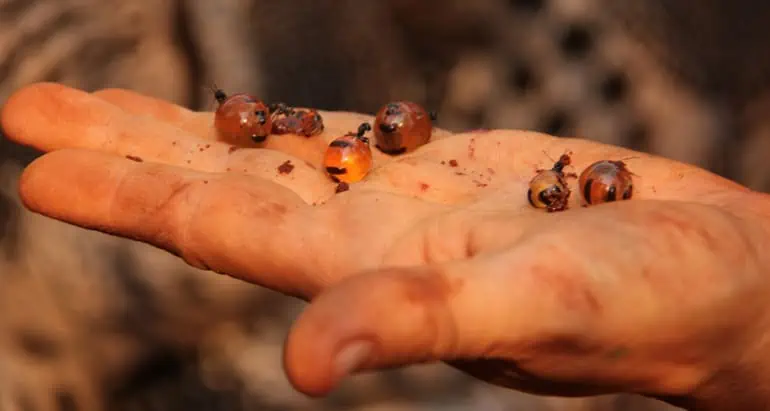Honey Ants

This was in central Australia in the Great Victoria Desert where the ants build their nests in the red sandy soil under a tree or bush with the entrance camouflaged by dead leaves and litter. The worker ants collect nectar from insects and feed the storer ants until their abdomens bloat. This protein-rich nourishment provides them with enough energy throughout the year. Living in their subterranean homes, they wait out long periods of drought before emerging when conditions become more favourable. This strategy has allowed them to thrive in an inhospitable landscape and is part of the unique desert unique ecosystem.
The Aboriginal women start digging away from the entrance hole, digging to find the side chambers where the storer or ‘replete’ ants reside. To reach the storage chambers and a few ants, the ladies dig 1.5 metres deep.
The repletes hang from the ceiling of the underground chambers. In lean times when food is scarce, they are able to provide this wonderful honeydew for the colony. The women carefully remove the ants and put them up beside the hole. We would suck the honey from the bloated golden-coloured abdomens of the storers. Honey ants are not just found in Australia and also occur in South Africa, Australia and South America represented by 34 species.
The other special animals on this site!

